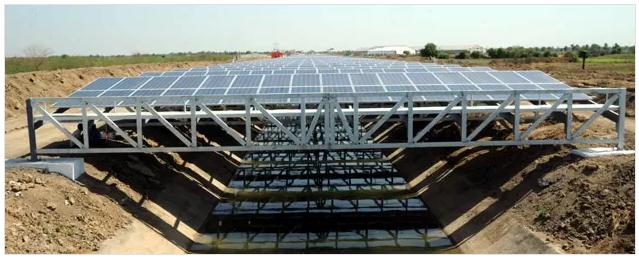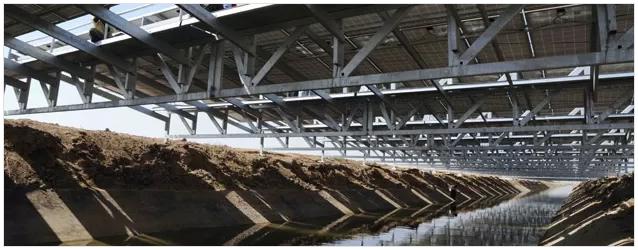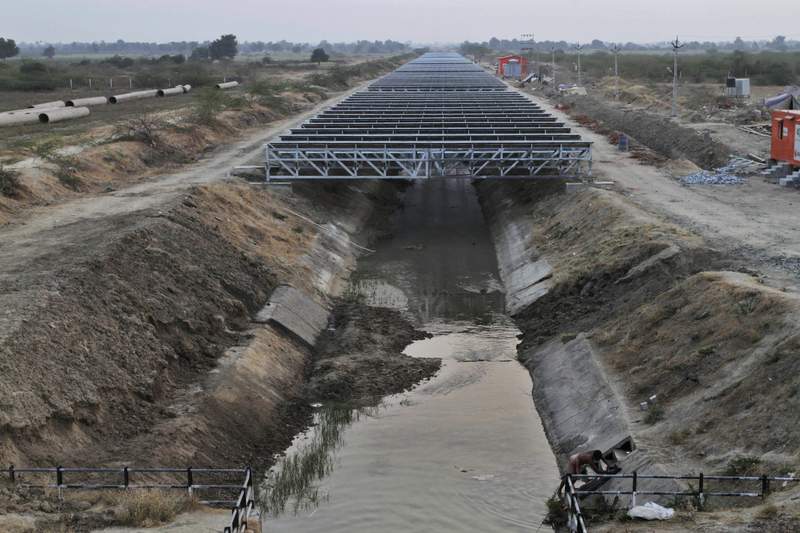
The Canal Solar Power Project is a project launched in Gujarat, to use 19,000 Kilometre long network of Narmada canals across the state for setting up solar panels to generate electricity. It was the first ever such project in India.
Narendra Modi, Chief Minister of Gujarat, inaugurated a 1 Megawatt (MW) pilot project on 24 April 2012. The project is situated on the Narmada branch canal near Chandrasan village of Kadi taluka in Mehsana district.
The pilot project will generate 16 lakh units of clean energy per annum and also prevent evaporation of 90 lakh litres of water annually from the canal. The project virtually eliminates the requirement to acquire vast tracts of land and limits evaporation of water from the 750 meter long canal, tackling two challenges simultaneously by providing energy and water security.
The engineering, procurement and construction contract for the project was awarded to Sun Edison at a cost of Rs 17.71 crore. The pilot project was developed on a 750 metre stretch of the canal by Gujarat State Electricity Corporation (GSECL) with support from Sardar Sarovar Narmada Nigam Ltd (SSNNL), which owns and maintains the canal network.
The cost per megawatt of solar power, in this case, is likely to be much less than the estimated Rs 10-11 crore, as the two banks of the canal will be used to cover the canal by installing solar power panel and the government will not have to spend much on creating basic infrastructure, including land acquisition .
Gujarat has about 458 Kilometre of open main canal, while the total canal length, including sub-branches, is about 19,000 Kilometre at present. When completed, the SSNNL’s canal network will be about 85,000 km long.
Assuming a utilisation of only 10 per cent of the existing canal network of 19,000 Kilometre, it is estimated that 2,200 MW of solar power generating capacity can be installed by covering the canals with solar panels.
This also implies that 11,000 acres of land can be potentially conserved along with about 2,000 crore litres of water saved per annum.
Highlights of the project:
1. The electricity is generated from renewable solar energy and hence it is clean and eco friendly.
2. As canals are covered with solar panels, there will be no explicit need to acquire lands to install the solar project.
3. The water evaporating from the canals will be reduced as the canal will be covered.
4. The power generated will be supplied to villages alongside the canal, which will lead to lower transmission losses.



